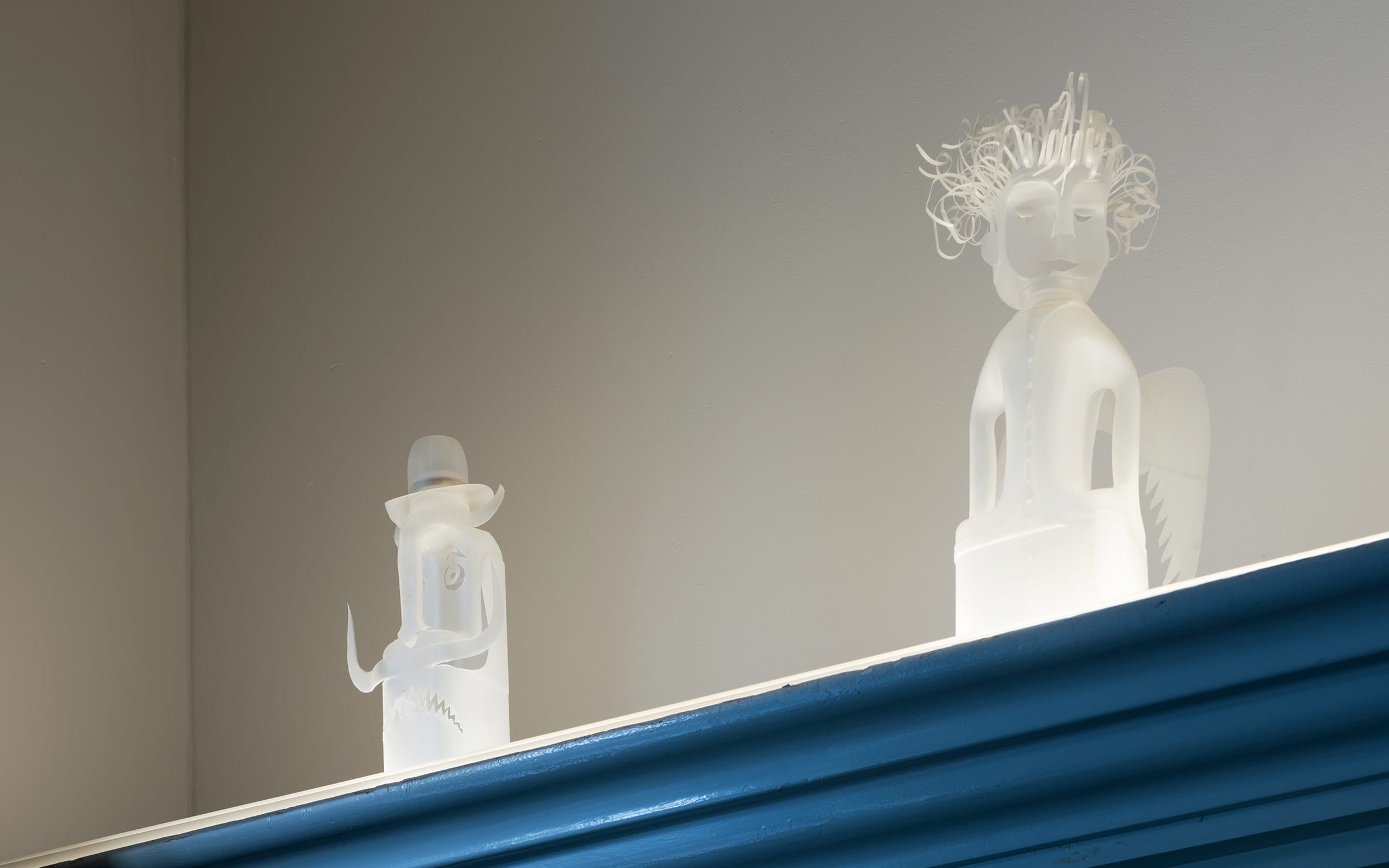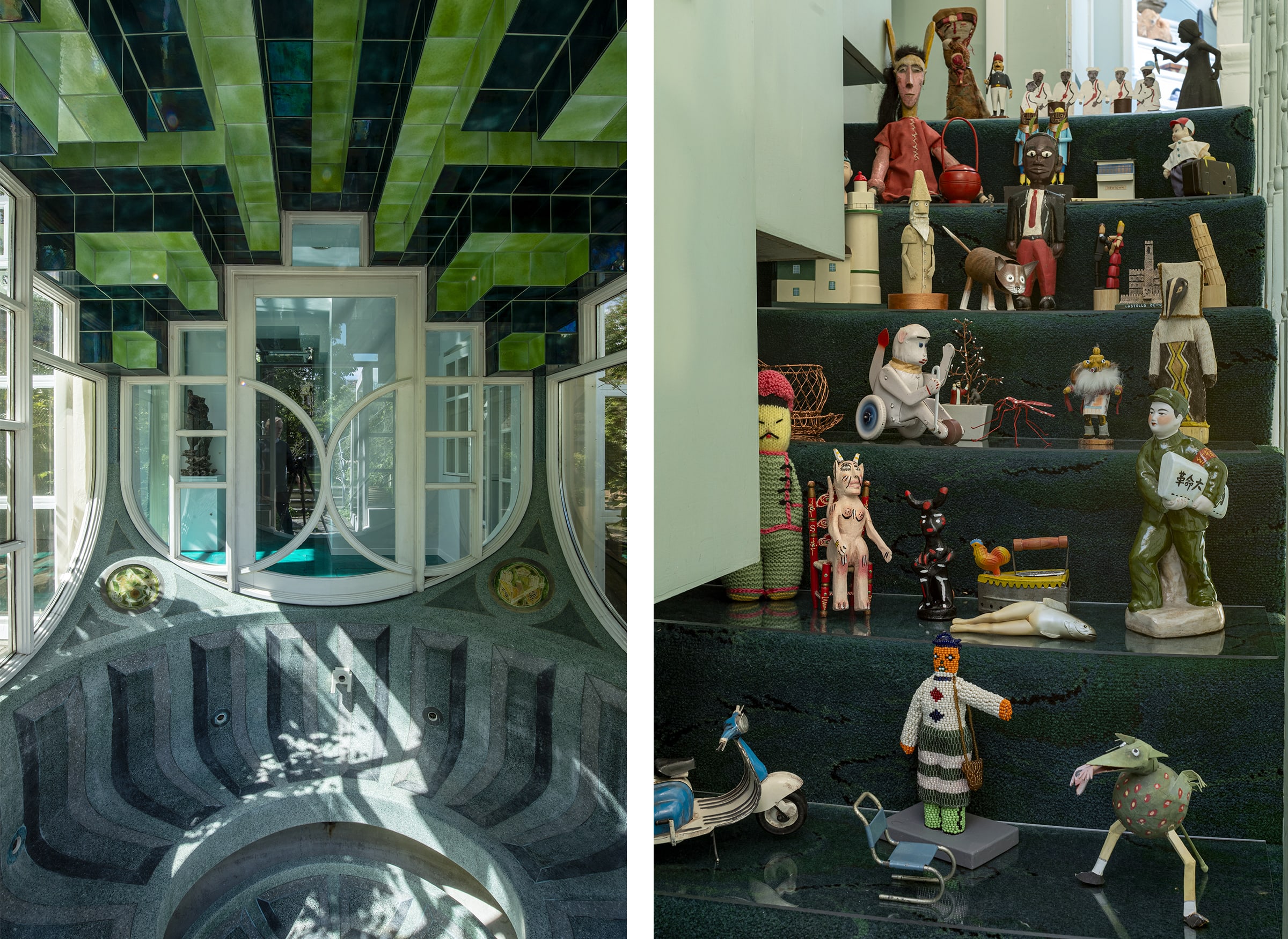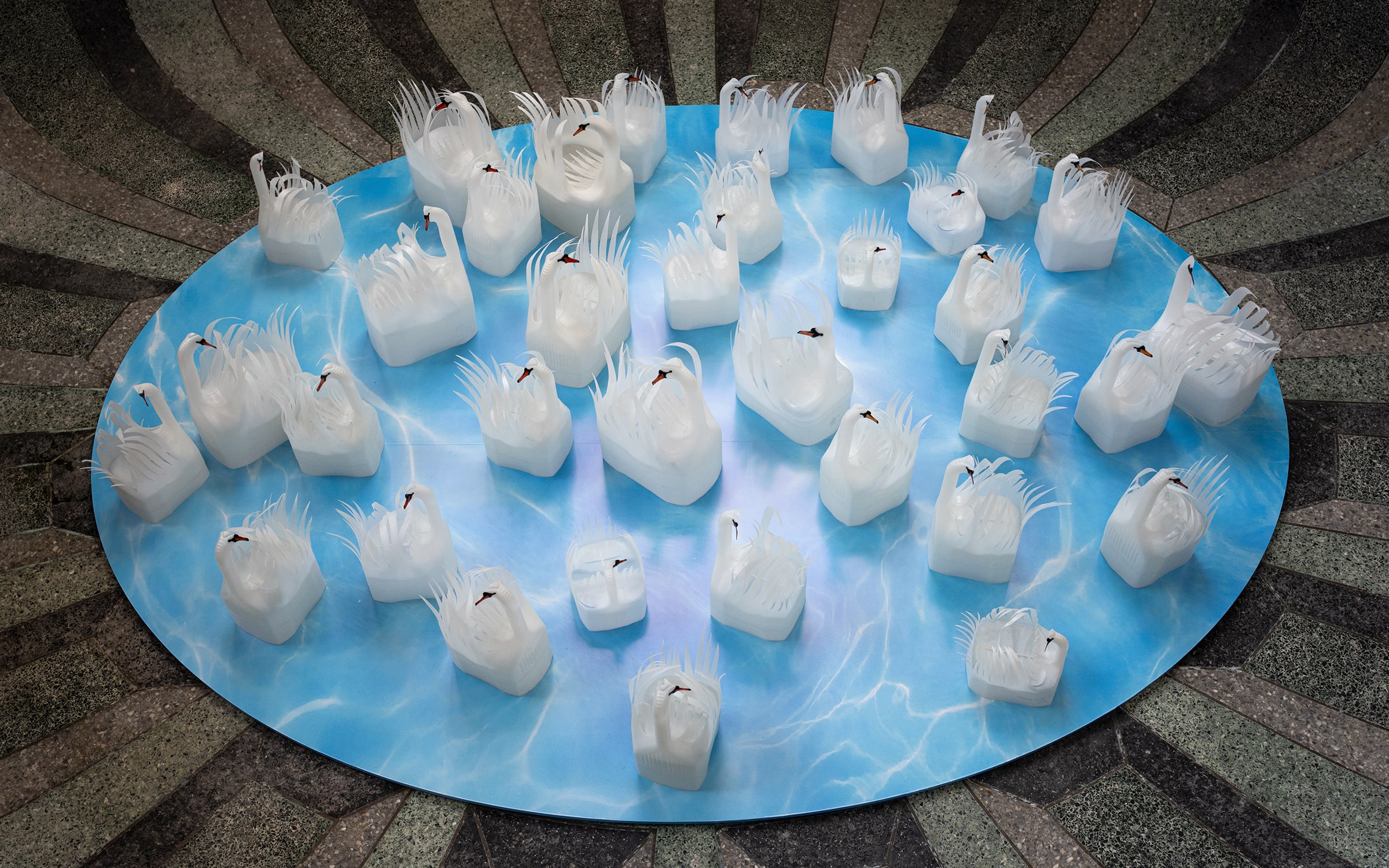‘I really miss him. He got so excited about debunking the norm,’ says the Dutch artist Madelon Vriesendorp of her close friend and sometime collaborator Charles Jencks, the American architectural historian, theorist, and landscape designer, who died at the age of 80 in 2019. Vriesendorp is sitting at a table in the light-filled ‘summer room’ of The Cosmic House – a mid-Victorian villa in London’s Holland Park, which Jencks and his second wife, Maggie Keswick, bought as a family home 1978, and promptly set about transforming (with the help of kindred spirits including the architect Terry Farrell and the Pop artist Eduardo Paolozzi) into a kind of built manifesto for that most intellectually playful of cultural movements, Post-Modernism.

The Cosmic House – with its witty, knowingly capricious deployment of materials, forms, and motifs, which nod to everything from the Classical world to the cutting edge of astrophysics – exemplifies Jencks’s belief, set out in his book The Language of Post-Modern Architecture (1977), that ‘articulating meaning and seeing that the environment is sensual, humorous, surprising, and coded as readable text…is the architect’s job and pleasure.’ Since 2021, the building has been open to the public under the auspices of the Jencks Foundation, and is currently host to Vriesendorp’s solo exhibition ‘Cosmic Housework’ – the title of which suggests both gendered domestic labor and the bringing of a new order to the universe. The artist’s exuberant, often very funny sculptures, paintings, drawings, design work, and collections of found curios are installed throughout the house’s already visually busy spaces – an approach that’s the antithesis of the austere, stiffly reverent white cube show. We might understand this as Vriesendorp’s way of continuing a dialogue with Jencks, who shared what she calls her ‘love of the ridiculous.’
Several pieces in the exhibition are products of the friends’ working relationship. A glass vitrine encases a plasticine model of a reclining female figure made by Vriesendorp in 2005. This is a maquette for Jencks’s vast 2012 ‘landform’ Northumberlandia (also known as The Lady of the North) – an anthropomorphic complex of grassy mounds, sinuous paths, and gleaming lakes that occupies a 19-hectare site in northeast England, and drew its inspiration from prehistoric earthworks. In his later years, says Vriesendorp, Jencks was ‘all about bodies.’ Elsewhere, a tailor’s dummy sports the artist’s Cosmic Suit (c.2009), a jacket and pill-box hat printed with images of iconic buildings and swirling galaxies, which she made for Jencks to wear at gatherings at the house. ‘We had dinner parties’, she recalls, ‘and he’d tell guests, “You believe this and you believe that,” and they’d have to fight it out. He always wanted some controversy.’

During the early stages of planning ‘Cosmic Housework,’ Vriesendorp says she was ‘very polite, but then I decided [the show] needed more deviousness and weirdness.’ Perhaps this accounts for the sculpture of a huge human foot – fashioned from gum strip tape, then painted to suggest that it’s been sawn off a living body – which is wedged into a doorway on the house’s garden level. There’s a wry joke, here, about the cost of accessing certain spaces, of getting a metaphorical ‘foot in the door.’ Is the work a swipe at the architectural establishment, which can often prove resistant to new voices? Vriesendorp remembers Jencks giving a lecture at the Royal Institute of British Architects in 1982, which was met with stony faces by his audience. ‘They sat there hating him, with their minimalist jackets, their concrete boots of Modernism, and their unbearable heaviness of being…They considered him a sort of clown.’
Vriesendorp has her own history with the architectural profession that precedes her collaborations with Jencks. Alongside her former husband, Rem Koolhaas, she was one of the founders of the seminal practice Office for Metropolitan Architecture, and her best-known work remains the painting Flagrant Délit (Caught in the Act, 1975), which was reproduced on the cover of Koolhaas’s book Delirious New York: A Retroactive Manifesto for Manhattan (1978). In this extraordinary image, Vriesendorp depicts the Empire State and Chrysler buildings lying in bed together in a cramped New York apartment. A spent condom in the shape of the Goodyear Blimp slithers over the edge of the mattress, attesting to these skyscrapers’ post-coital bliss. Through the apartment’s doorway marches the austere edifice of the 30 Rockefeller Plaza building, which shines a searchlight on the lovers as though it were a torch-wielding cop. Outside the window, the Statue of Liberty – as limbless as the Venus de Milo – peers in at the scene, a look of inconsolable sorrow on her face.
For many years, much of the architecture world assumed – incorrectly, and with no small degree of sexism – that this delicious, self-sufficient satire on the strand of killjoy authoritarianism that runs through the Modernist project was commissioned by Koolhaas, to illustrate Delirious New York’s probing of what he termed the city’s ‘collective unconscious.’ When Vriesendorp was awarded the 2018 Ada Louise Huxtable prize, which recognizes the contributions of women to the wider architectural industry, her acceptance speech made pointed reference to how key female figures are often ‘written out of the script.’

In recent years, Vriesendorp’s art has achieved a new level of visibility. In 2020, she painted a huge mural on the side of a high-rise housing block in the Dutch city of Heerlen. Titled The Whispering Game, it depicts an androgynous, blue-skinned figure murmuring into a curved green ear. Given the gargantuan size of the figure’s mouth, whatever secret it’s about to disclose would be broadcast to the entire neighborhood. The artist tells me that the mural was inspired by ‘fake news…how things come out on the wrong side of truth.’
Much more modest in scale are Vriesendorp’s Plastics Surgery (2020–ongoing) sculptures, in which she transforms plastic milk bottles into animal and other forms with a few adroit flicks of a scalpel. At The Cosmic House, a group of these works are displayed atop a bank of dark cabinets, illuminated from below so that they glow like Carrara marble. It’s a material sleight-of-hand that would have surely delighted Jencks. ‘I had them in my kitchen before, lit by fairy lights,’ deadpans Vriesendorp. ‘They look much better here.’ More Plastics Surgery sculptures, in the form of a flock of swans, occupy the Piers Gough-designed jacuzzi. The artist made a large number of such birds during the COVID-19 lockdown. Once social life resumed, ‘people would come to my home and I’d say, “Here, take a swan.” All my friends have one.’


Vriesendorp’s generosity of spirit extends to the great hoard of souvenirs she’s collected over a lifetime’s travels that make up her Object Archive. A small selection of these is displayed on a staircase in The Cosmic House, including a knitted doll of a Chinese sage, a figurine of a little girl attempting to straighten the leaning tower of Pisa, and what might be a clumsy wooden effigy of Barack Obama. A self-conscious sophisticate would consider them mere tchotchkes, which fundamentally misunderstand the cultural traditions and forms they attempt to replicate, but for the artist they’re very special. ‘I love these objects. You can see the people who created them were striving towards something and they just didn’t make it. It’s so moving.’ Vriesendorp’s ability to find value in things that others overlook, or dismiss with a humorless patrician sneer, is of a piece with her wider practice. As ‘Cosmic Housework’ demonstrates, this appealingly mischievous artist always plays – like Jencks – by her own rules.

Tom Morton is a writer and curator based in Rochester, UK. He is a regular contributor to frieze and ArtReview, and in 2022 curated the group exhibition ‘The Kingfisher’s Wing’ at GRIMM, New York.
Published on October 24, 2023.
Caption for full-bleed image: Madelon Vriesendorp at The Cosmic House. Photograph by Giulio Sheaves. Courtesy of the Jencks Foundation.